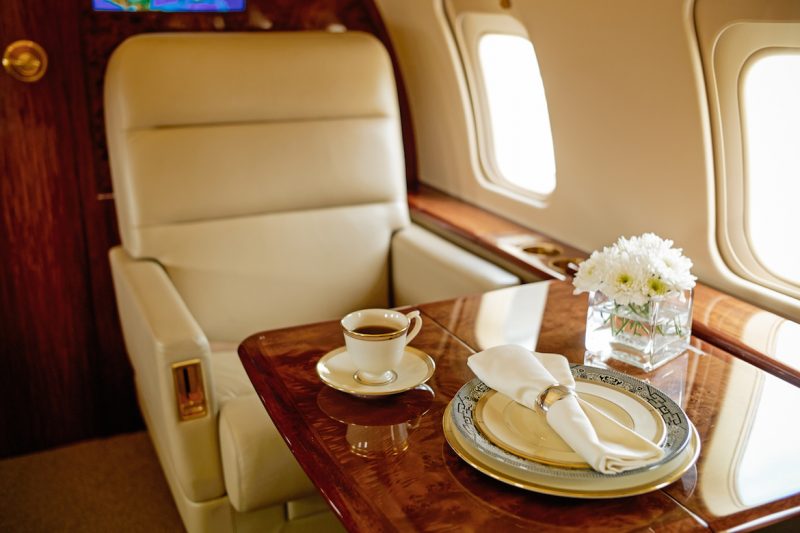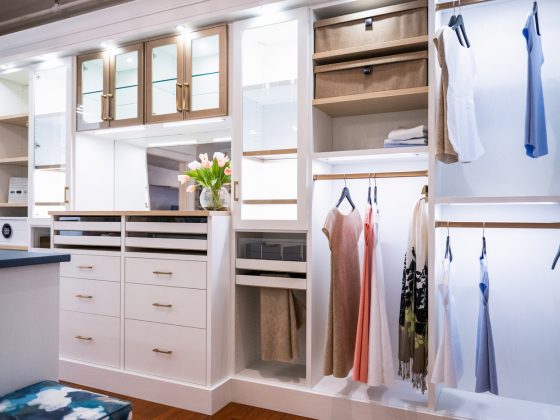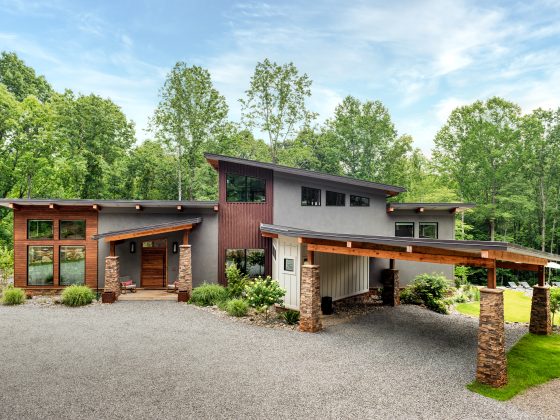When, years ago, one of Amy Vermillion’s home clients approached her with the prospect of designing the interior of a private jet, she found herself weighing her pieces of choice for the first time: A jet interior can’t be too heavy, but that doesn’t stop Amy from seeking out the most timeless and beautiful lightweight materials she can find. On these jets, even the bathroom walls require an inspired choice of fabric. Like her residential interiors, Amy’s jets are the definition of luxury. Emphasizing, as always, a strong collaborative relationship with her clients, Amy Vermillion is making second homes in the sky.
How did you get started designing jets?
Most of my work is residential but several years ago I had an existing client call me and ask if I would design a private jet that they had purchased. Honestly, I had no idea how to go about it but she was confident that I could do it and so I met with their pilot and tried to get educated. I am sure he thought I was ridiculous since I referred to the vertical stabilizer as the “tail thing” but we have since worked on several jets together and laugh about that first meeting now.
When I design someone’s sofa for their home, I never have to be concerned with g-force.
What are the main concerns or difficulties you encounter?
Weight and flammability. Every pound that gets put on the aircraft costs more money in fuel. The key is to make all selections beautiful, appear sturdy and actually be lightweight. I consider everything when making selections — even the barware and dishes. Fabrics and carpets need to be treated with flame resistant finishes. We never like to think about the possibility of a crash—but we have to. When I design someone’s sofa for their home, I never have to be concerned with g-force, but I do with aviation design and there are other things too. How will this seat hold up if there is an emergency situation? Will my clients be able to evacuate swiftly? Does this furniture layout impede the traffic path of the the flight attendants and crew? Are these fabrics going to melt? So, besides beauty and timelessness, I have to consider safety.
Do you get to fly on the jets?
Yes! And it will spoil you forever. One of the first flights I take is called the “cold soak” with the crew. After the interior is assembled (and this takes almost a year from design to completion) we take the jet up to a certain altitude and fly it around for a couple of hours to test how everything responds. We call it the flight to nowhere. There is nothing better than driving to a hanger, getting on a jet and taking off fifteen minutes later. No security lines and no competing for overhead space!
Who are your clients?
Most of my clients fly for business but some use their jets for personal use. They fly to many countries (sometimes in the same week) and it would be a giant waste of time (and money) to fly commercially. The jet is like a hotel room for them. They eat, sleep and freshen up on board and I want them to be as comfortable as possible. One of my clients told me that when he boarded his jet after a particularly tense week of meetings, he immediately felt like he was in his second home — relaxed and happy.
What kinds of luxury items do you get to use in your design?
Because of the price tag on a jet, I am extremely judicious about the permanence of my selections Where else can you use smoked eucalyptus for cabinetry and gold plated sinks? The bottom line is the client can have just about whatever they want— as long as it passes FAA requirements. Custom cabinetry, monogrammed linen, inlays, china, crystal, cashmere throws are all pretty standard on the jets I design. And most people don’t know there is a VIP seat in every private jet. The VIP seat is chosen by the owner and it’s where they like to sit most. From this seat, the main controls for the avionics are accessible. They can control the lighting, temperature, and cameras (if the jet has them).
 What exactly is smoked eucalyptus?
What exactly is smoked eucalyptus?
Sounds like an appetizer but it’s actually wood veneer. When I design a jet there is a lot of wood involved, from the galley and bathrooms to the bulkhead and other cabinetry. Smoking is the process of fuming the wood to encourage the rich, dark brown tones to emerge. I love working with the cabinet makers on aircraft jobs because of the variety of wood veneers available.
What’s your favorite thing about working in private aviation?
It is really exciting to be around jets. I love the sound of them firing up and there isn’t anything better than takeoff on a really fast jet. From a design perspective, I get to work with the very best materials in the industry. Whether it is deciding on the metal inlays or plating or choosing the fabric for the walls in the bathrooms, I love the selection process. It’s an opportunity to think on a completely different level than residential design, as it’s more technical and precise. As they say, the sky’s the limit and this has never been truer than when designing a private jet.














